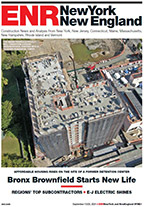John Watson, who spent most of his career revamping existing buildings, had technically retired from the real estate business. Serving as a volunteer board member of Indiana Landmarks, a nonprofit preservation group, helped reignite the Indianapolis developer's passion for transforming old into new.
The spark came in the shape of Bush Stadium, a ballpark built in 1931 for the minor-league Indianapolis Indians. The team used the Art Deco park until 1996, when it moved into a new stadium downtown.
Located in an industrial wasteland near the city's west side, the old building had fallen into disrepair. For a time, it became a dirt racetrack. Later, it was acting as a boneyard stuffed with rusty vehicles traded in for the so-called Cash for Clunkers program. It appeared only a matter of time before the building, listed on the National Register of Historic Places, was going to be erased from the map forever.
Bush Stadium "was on Indiana Landmark's 10-most endangered historic properties for almost a decade," says Watson, 54. Fellow preservationists asked him to come up with a plan to reuse the building.
"I said, well, it's feasible, but I don't know how economically or structurally sound it is, and left it out there as an idea."
Watson's idea, which he pitched to the city nearly three years ago, became a home run among urban planners in the region. Believed to be the first project of its kind, Stadium Lofts preserves the existing building's facade—part brick, part Indiana limestone—and transforms the seating section into a wood-framed, three-story building with 138 rental units totaling 160,000 sq ft.
Watson's firm, Core Redevelopment LLC, estimates the project, which is set to open this summer, will cost $13 million. Core has a second phase planned that includes another 144 units, 111,000 sq ft in all, on a site adjacent to the stadium, as well as future office space on the 14.5-acre parcel. The total development work for the entire site is estimated to cost $23 million.
The baseball field will remain green space, but the developer insisted on concreting the original infield base paths to preserve its footprint.
Finding a way to reuse the old stadium without losing its character is one of the redevelopment's many successes, people involved in the project say.
"I've worked on a lot of historic buildings in Indianapolis, but I've never worked on a project where so many people have had a connection to Bush Stadium," Watson says. "Everyone I've talked to has a memory of Bush. They went there with their dad, saw their first baseball game there or hung out there as a teenager."










